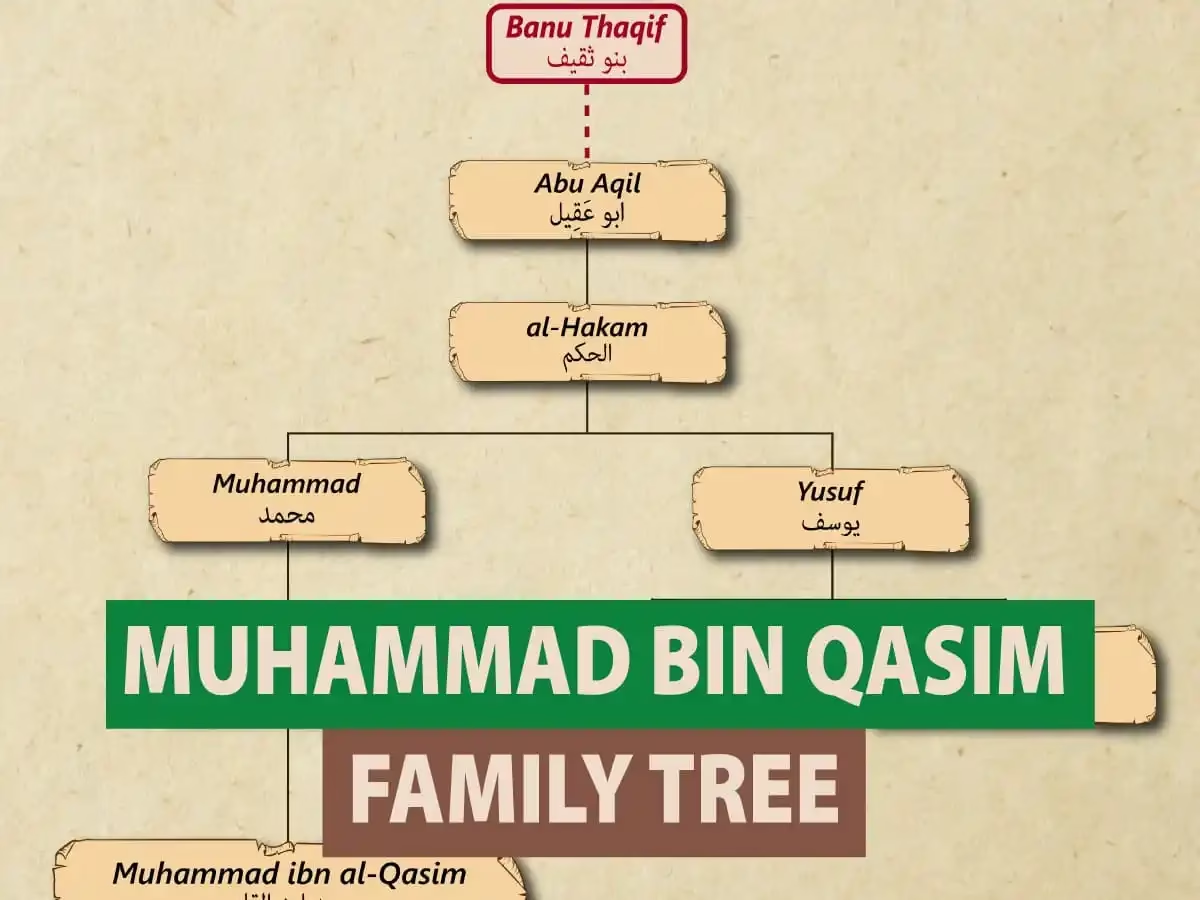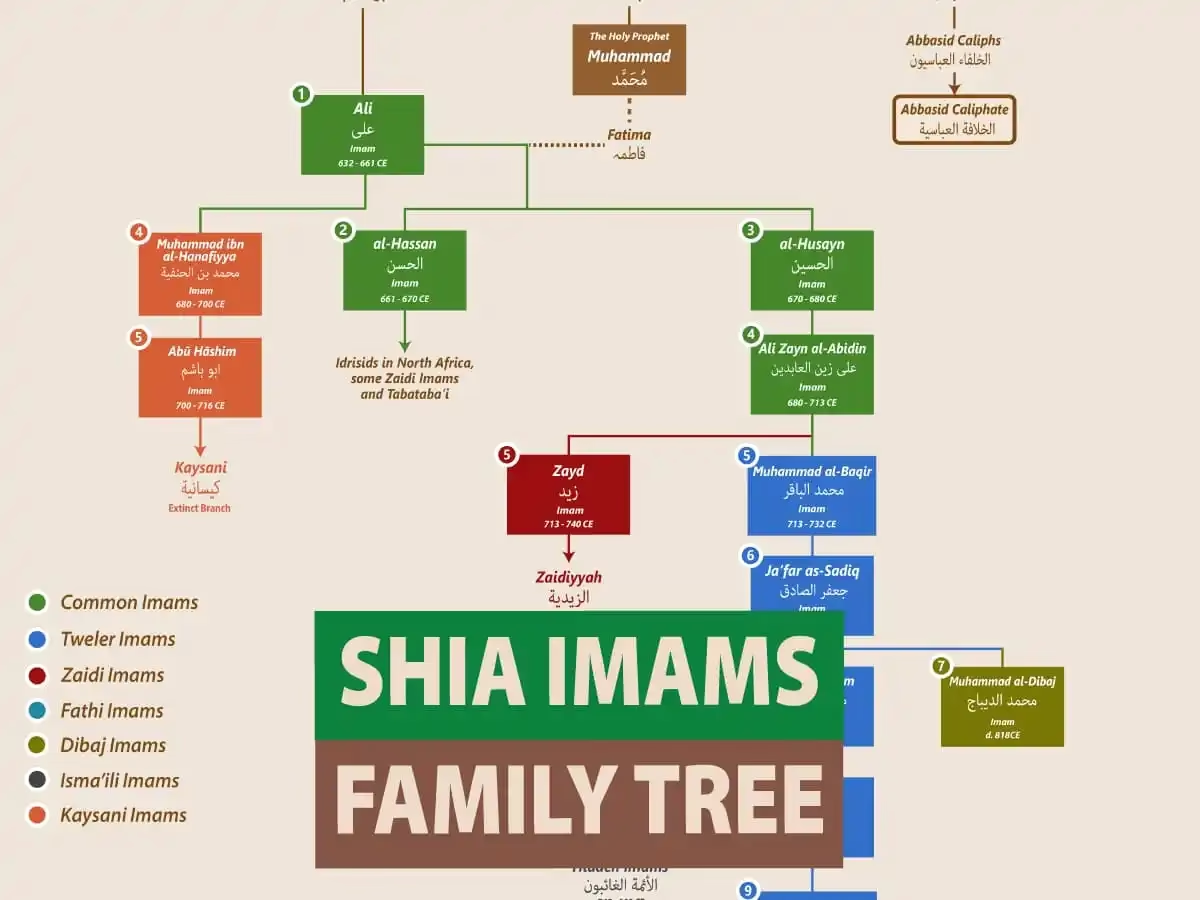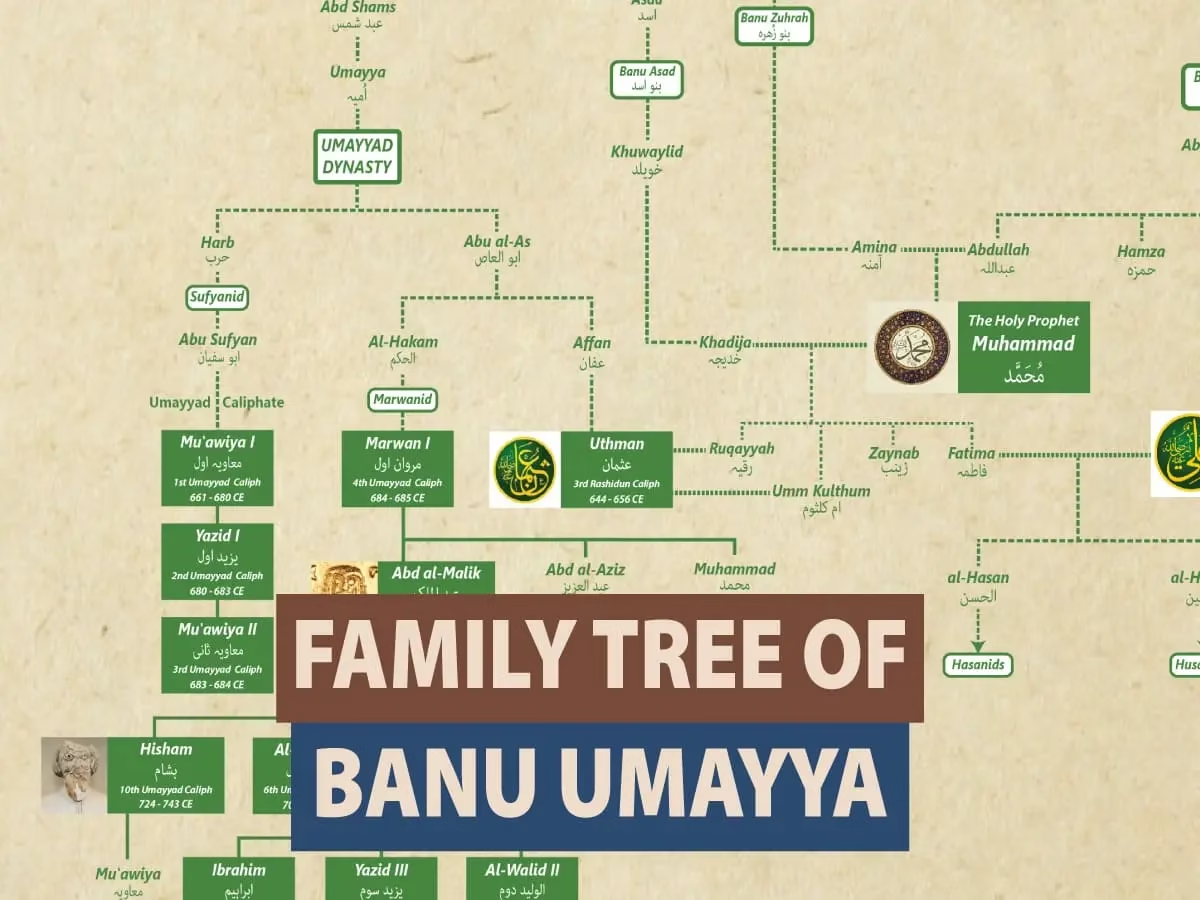The Timurid dynasty is one of the most influential dynasties in history, linking the Mongol and Persian worlds while laying the foundation for the Mughal Empire. Spanning multiple rulers, the dynasty was founded by Amir Timur or Tamerlane and later culminated in Babur, the first Mughal emperor.
This chart explores the family tree of the Timurids, highlighting the rulers and key figures who shaped their legacy.
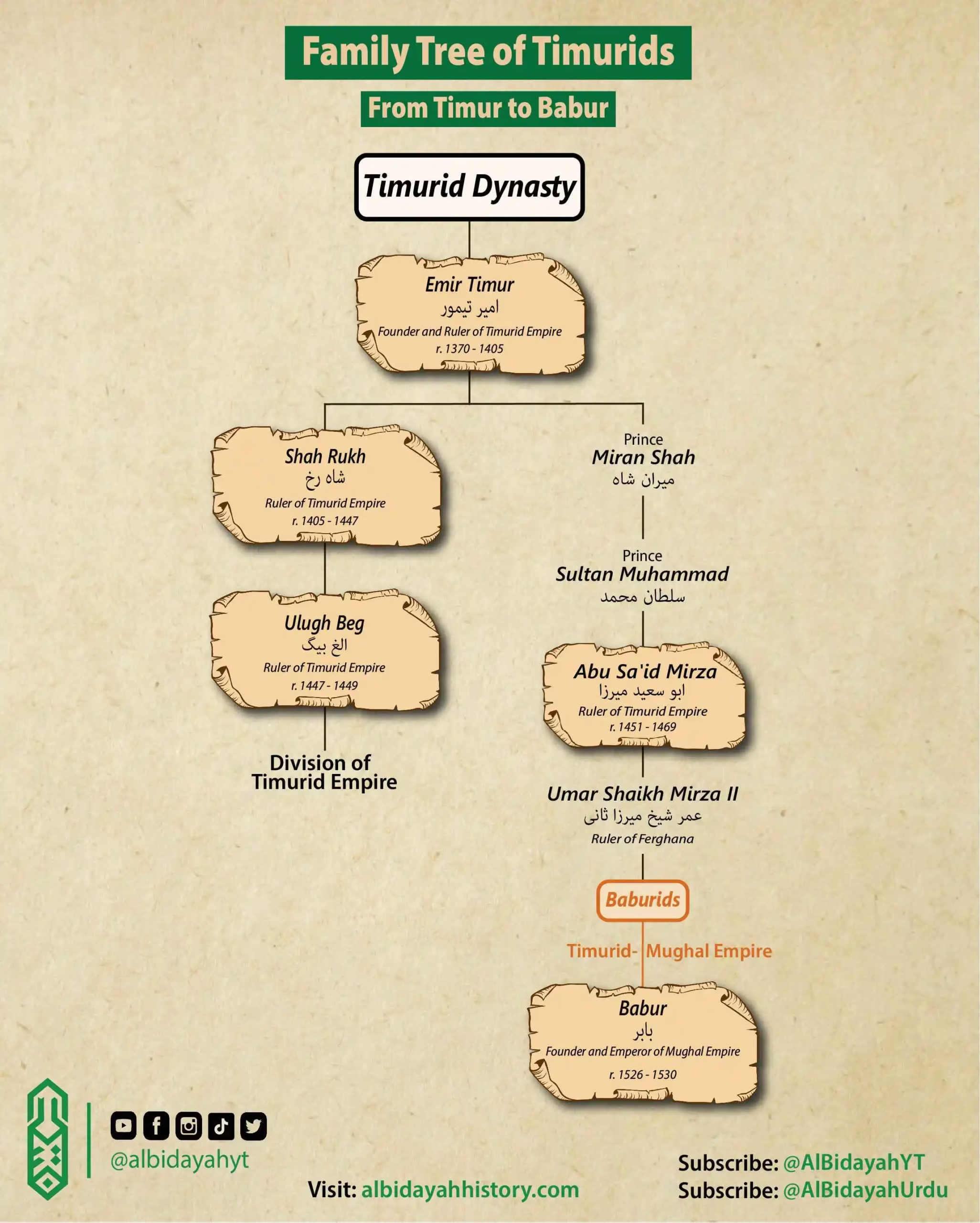
Amir Timur (Tamerlane): Founder of the Timurid Empire
Amir Timur (1336–1405), also known as Tamerlane, was the founder of the Timurid Empire. He claimed descent from the Mongol conqueror Genghis Khan through his marriage into the Chagatai lineage. Timur was a formidable military leader, expanding his empire across Persia, Central Asia, and parts of India. He established Samarkand as his capital, turning it into a hub of culture and learning.
To legitimize his conquests, Timur relied on Islamic symbols and language, referring to himself as the “Sword of Islam”. He was a patron of educational and religious institutions. He styled himself as a ghazi in the last years of his life. By the end of his reign, Timur had gained complete control over all the remnants of the Chagatai Khanate, the Ilkhanate, and the Golden Horde, and had even attempted to restore the Yuan dynasty in China. Timur is also considered a great patron of art and architecture, for he interacted with intellectuals such as Ibn Khaldun, Hafez, and Hafiz-i Abru and his reign introduced the Timurid Renaissance. Upon his death in 1405, his empire was divided among his descendants.
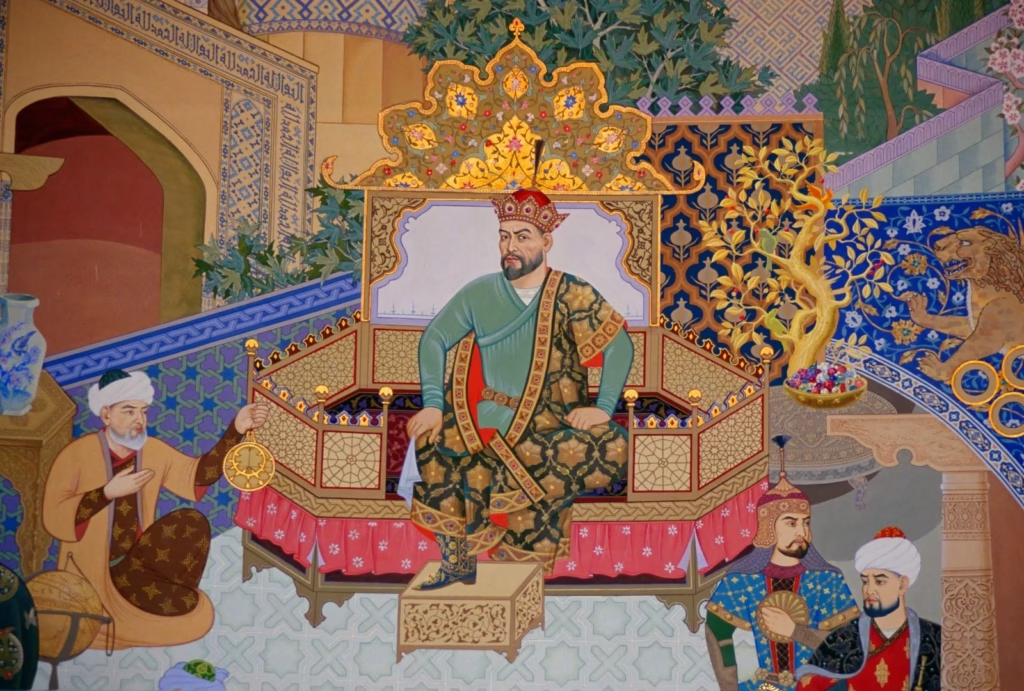
Shah Rukh: The Stabilizer of the Timurid Empire
Timur’s son, Shah Rukh (r. 1405–1447), inherited the empire and ruled from Herat, focusing on consolidating his father’s vast conquests. However, Shah Rukh ruled only over the eastern portion of the empire established by his father, comprising most of Persia and Transoxiana, the western territories having been lost to invaders in the aftermath of Timur’s death. In spite of this, Shah Rukh’s empire remained a cohesive dominion of considerable extent throughout his reign, as well as a dominant power in Asia.
Unlike Timur, who prioritized military expansion, Shah Rukh emphasized governance, cultural development, and diplomacy. His reign saw a flourishing of Persian art and archite In the view of historians Thomas W. Lentz and Glenn D. Lowry,
“unlike his father, Shahrukh ruled the Timurid empire, not as a Turco-Mongol warlord-conqueror, but as an Islamic sultan. In dynastic chronicles he is exalted as a man of great piety, diplomacy, and modesty—a model Islamic ruler who repaired much of the physical and psychological damage caused by his father.”
Ulugh Beg: The Astronomer King
Ulugh Beg (r. 1447–1449), son of Shah Rukh, was more interested in science than warfare. He was a renowned astronomer and mathematician, founding the Ulugh Beg Observatory in Samarkand. Ulugh Beg was notable for his work in astronomy-related mathematics, such as trigonometry and spherical geometry, as well as his general interests in the arts and intellectual activities. It is thought that he spoke five languages: Arabic, Persian, Chaghatai Turkic, Mongolian, and a small amount of Chinese.
However, Ulugh Beg’s scientific expertise was not matched by his skills in governance. During his short reign, he failed to establish his power and authority. As a result, other rulers, including his family, took advantage of his lack of control, and he was subsequently overthrown and assassinated and marking the beginning of instability in the Timurid realm.
Miran Shah: Timurid Prince
Timur had other sons, including Miran Shah, who played a crucial role in governing parts of the empire. During his father’s reign, Miran Shah was initially a powerful regional governor and prominent military commander, having aided Timur in his conquests as well as suppressing several revolts. However, after facing accusations of destructive and hedonistic behaviour, the prince was later deposed from these roles by the emperor.
Following Timur’s death in 1405, Miran Shah became embroiled in the ensuing war of succession, having thrown his support behind his son Khalil Sultan. He was later killed whilst battling against the Timurid’s traditional rivals, the Qara Qoyunlu.
Sultan Muhammad Mirza: Timurid Prince
Sultan Muhammad, was involved in the Timurid administration but did not leave a significant political impact compared to his cousins. Little is known about his life, though through his son Sultan Abu Sa’id Mirza, he was the great-grandfather of Babur, founder of the Mughal Empire of India.
Abu Sa’id Mirza: The Reunifier of the Timurid Empire
Following the fragmentation of the Timurid Empire after Ulugh Beg’s assassination, Abu Sa’id Mirza (r. 1451–1469) took power. Over the course of two decades, he reunified much of the Timurid Empire, which had become fractured in the aftermath of the death of his great-uncle Shah Rukh. However, his reign ended when he was defeated by the Aq Qoyunlu dynasty in 1469.
He was the paternal grandfather of Babur, who later founded the Mughal Empire of India.
Umar Shaikh Mirza II: Ruler of Ferghana
Umar Shaikh Mirza II, son of Abu Sa’id Mirza, ruled the small but important province of Ferghana. Umar Shaikh died in a freak accident in Aksi fort, North Fergana, on 10 June 1494. It occurred when he was in his dovecote Although he did not expand his territory significantly, his legacy is crucial because he fathered Babur, the founder of the Mughal Empire.
Babur: The Founder of the Mughal Empire
Babur (1483–1530), born Zahīr ud-Dīn Muhammad, was the founder of the Mughal Empire in India. A descendant of Timur also known as Tamerlane and Genghis Khan, he was born in Andijan, Fergana (modern Uzbekistan). He ascended the throne of Fergana at 12 but faced constant struggles, losing and regaining Samarkand multiple times. In 1504, he conquered Kabul and later, with Safavid and Ottoman support, turned his sights on India.
In 1526, Babur defeated Ibrahim Lodi at the First Battle of Panipat, marking the beginning of Mughal rule. He later triumphed over Rana Sanga at the Battle of Khanwa, solidifying his control over North India. A patron of the arts and a skilled military strategist, Babur was also a poet and historian, authoring the Baburnama.
He died in 1530 in Agra, and his son Humayun succeeded him. Initially buried in Agra, his remains were later moved to Kabul. Babur is celebrated as a national hero in Uzbekistan and Kyrgyzstan, with his literary and cultural legacy enduring in Central and South Asia.

The Transition from the Timurid to the Mughal Empire
The Timurid Empire, despite internal struggles and regional fragmentation, left a lasting impact on history. The legacy of the Timurids continued through Babur and the Mughal Empire, influencing art, culture, and governance in South Asia for centuries.

